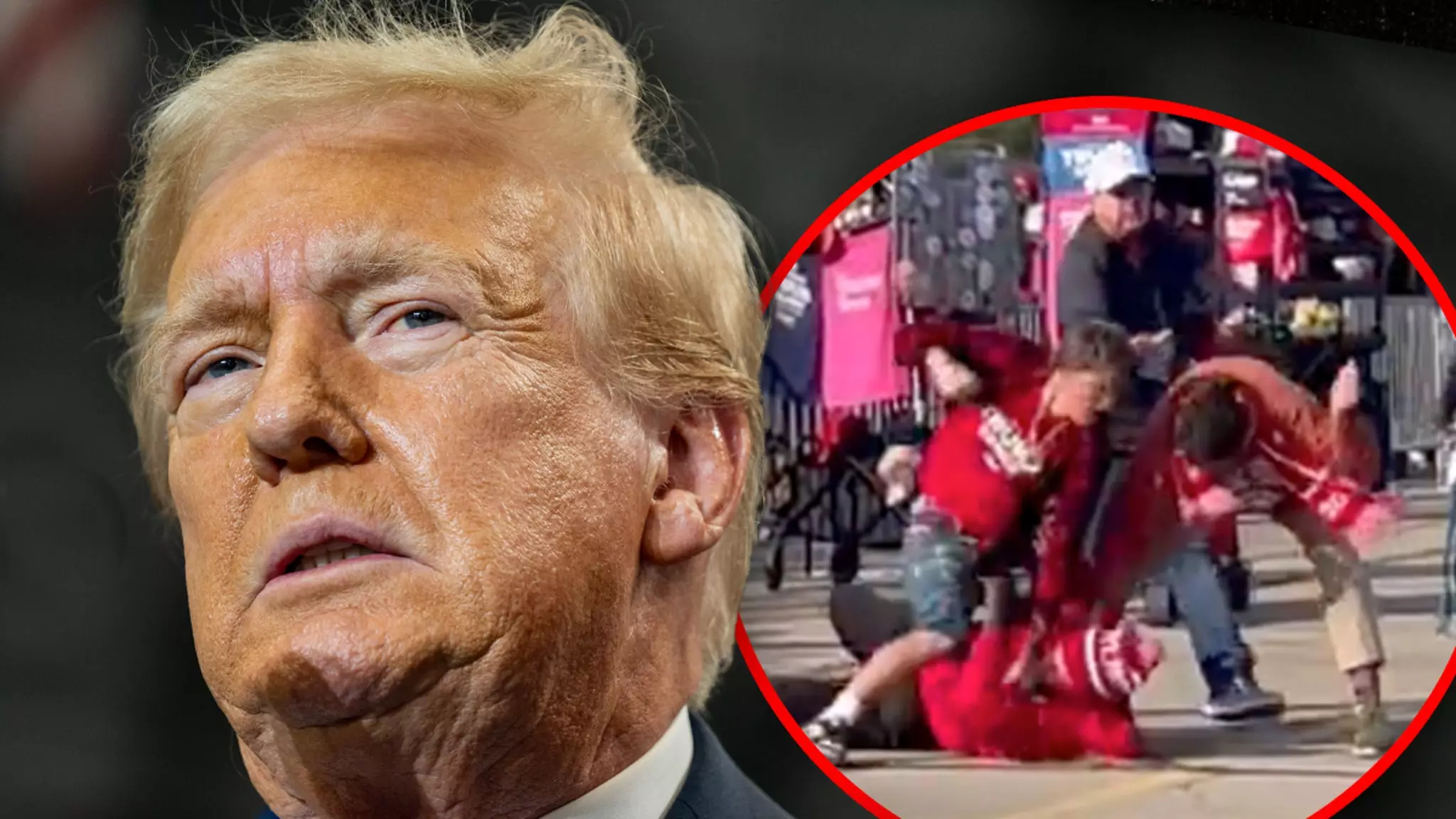The prelude to a political rally can often elicit anticipation and excitement among supporters, but at a recent gathering for Donald Trump in Michigan, the atmosphere took a wretched turn. On a Thursday afternoon, fervent supporters amassed outside Saginaw Valley State University, united by their allegiance to Trump and his 2024 campaign. However, this camaraderie disintegrated into discord when a physical altercation broke out among attendees. The events that unfolded not only reflect the intensity of political affiliation but also underscore a deeper issue of factionalism within political movements.
As the rally neared, a brawl erupted between three individuals in the parking lot—a scene reminiscent of tribal warfare rather than a civil gathering. Videos captured the chaos as two men clad in red “Make America Great Again” gear fiercely attacked another participant adorned in similar Trump-themed attire. The ferocity of the confrontation was startling, with punches thrown relentlessly until security intervened, showcasing the volatile nature of political passion gone awry. Reports that the altercation may have been between vendors at the rally add an additional layer of complexity, provoking questions regarding the underlying tensions that ignited such violence.
Moments like these serve as a stark reminder of the fractious state of political engagement in the United States. It exemplifies how fervor and allegiance to a cause can occasionally devolve into hostility and aggression against fellow partisans. This incident raises concerns about the physical expression of ideological divisions not only within the Republican Party but across the political spectrum. Given that the United States is already grappling with intense polarization, the chaotic scene at the Trump rally underscores the urgent need for a re-evaluation of how political affiliations are expressed and the tolerance levels among supporters.
Despite the altercation, Trump’s campaign continues unabated, with plans for him to deliver his address a few hours later. Instances like this challenge the narrative surrounding political rallies as merely celebratory or unifying events. Instead, they serve as a platform where divisions can be exposed and exacerbated. As Trump prepares to speak to his supporters, there is palpable tension in the air—not just from the recent scuffle but also from the broader challenges facing the political landscape, including competing visits from figures like Vice President Kamala Harris.
While political rallies are intended to galvanize support and enthusiasm, events at Saginaw Valley State University offer a grim reflection on the broader implications of political division in America. The spontaneous violence witnessed serves as a microcosm of the strain within political communities, posing critical questions about solidarity, loyalty, and conflict. In an age where political identities are increasingly sharpened, this incident underscores the urgency for political actors and their supporters to foster dialogue and understanding, lest their movements become ensnared in cycles of aggression and discord.

Leave a Reply